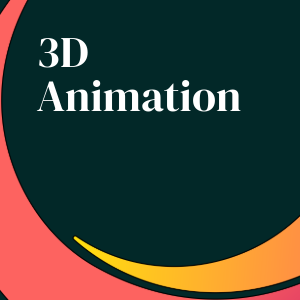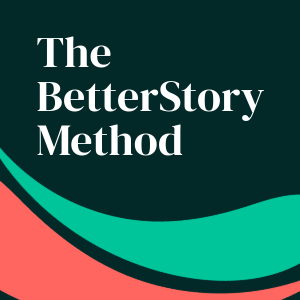
Design-led storytelling is redefining how animation is developed, offering an analytical and creative process that helps teams uncover insight, define brand purpose and shape visuals that serve a clear narrative goal. In practice, it provides a framework for understanding what a brand narrative must achieve by examining business objectives, audience motivations and desired emotional responses before production begins. By applying specific design principles to brand storytelling, creative teams can move beyond intuition and make purposeful, evidence-based decisions.
In today’s landscape, visually impressive animations without a clear message risk becoming noise, rich in style, but lacking in substance. Therefore, it is important that every visual element, from pacing and palette to tone and typography work together to communicate meaning and reflect a brand’s values and distinctive voice. Design-led storytelling ensures this alignment, transforming motion into a strategic tool for coherence and emotional connection.
At Content Creatures, we champion this approach to create stories with clarity, consistency and lasting resonance. It helps us turn intuition into informed decision-making because, we believe strong animation is built on understanding, not assumption.
In this blog, we’ll explore what design-led storytelling means in animation, outline its three core pillars, and highlight how Content Creatures applies it as a central part of our creative strategy.
What is Design-led Storytelling in Animation?
Design-led animation is the practical application of design thinking within the creative process to ensure that every decision serves a clear purpose. While models of design thinking vary, they share a common structure built around five stages: empathise, define, ideate, prototype and test, all of which apply to animation. However, the process is not strictly linear; these stages often overlap and loop back on one another, allowing for reflection, refinement and creative exploration throughout production.
The process begins by understanding the audience, their needs, motivations and challenges before clearly defining the problem the animation must solve. From there, creative concepts are generated, visualised and brought to life through storyboards, style frames and motion prototypes. Each iteration is then tested and refined using feedback, ensuring the final animation is both relevant and emotionally effective.
As a result, this approach offers a disciplined framework for purposeful brand storytelling, where each decision is shaped by insight and aligned with a clear narrative goal.
At Content Creatures, being design-led means thinking before drawing and strategising before animating. We apply principles of design to shape every stage of our creative process, from the first discovery conversation to final delivery. This approach allows us to craft animations that not only look distinctive but communicate meaningfully to express what a brand stands for.
What are The Three Pillars of Design-led Animation?
Design-led animation is built on three core pillars: clarity, emotion and consistency, whereby each plays a distinct role in transforming visual storytelling into a strategic brand asset.
What is Clarity in Animation?
Clarity ensures every design decision supports the story’s intent and helps audiences understand key messages effortlessly. In animation, clear communication reduces cognitive load and removes unnecessary friction, enabling individuals to engage with the message instead of trying to decode it.
Through the design-thinking process, creative teams can structure a clear, well-organised story arc that guides audiences through information in a logical and engaging way, helping them absorb crucial messages without confusion.
Why Does Clarity Matter in Animation?
Simplicity is critical. Research in multimedia advertising, of which animation is a key element, indicates that minimising extraneous elements, using concise messaging, synchronising audio and visual channels and establishing a clear informational hierarchy significantly improves attention, comprehension and retention.
Take a look at our carousel on the 5 principles for clarity in animation:
Research highlights that 81% of consumers ignore irrelevant marketing messages. Therefore, by avoiding unnecessary detail and prioritising essential information, creative teams can direct attention to what matters most. Because Humans naturally look for patterns and relationships in what they see, clear composition, deliberate pacing and strong visual hierarchy, when applied effectively, can effectively guide audiences’ attention with purpose, strengthening both understanding and engagement.
Take a look at this animated explainer video we created for Grundon, one of the UK’s leading waste management suppliers. It conveys how they transform food waste into fuel and fertiliser using anaerobic digestion in a clear and easy-to-follow way.
What is Emotion in Animation?
Emotion in animation refers to how visual and auditory elements work together to evoke feeling and empathy in the viewer. Design-led animation delivers emotional value more directly and efficiently than other artistic mediums. In this approach, emotion is intentionally designed. By understanding basic colour psychology and the influence of typography, imagery and movement on audience reaction, creative teams can shape how viewers feel and connect. Every purposefully selected visual and auditory cue, from composition and colour to music and character expression can stimulate the emotional neural network in the brain, contributing to how audiences feel.
Take a look at this animation we created for PDA Society. Using animation, storytelling and emotion, it helps express the inner feelings of the people with PDA using picture and sound.
Why Does Emotion Matter in Animation?
Today, 64% of consumers want brands to connect with them, underscoring the importance of corporate storytelling that resonates. Animation mirrors reality through characters and stories that reflect human behaviour and experience, allowing viewers to connect with ideas and concepts that feel authentic to their own lives. Scientists believe emotion plays a vital role in choosing what we pay attention to, how we behave and the decisions we make. By applying design-thinking principles early in the creative process, brands can intentionally craft animations that evoke feeling, such as empathy and excitement, responses that build stronger lasting connections with audiences.
What is Consistency in Animation?
Consistency in animation ensures a cohesive visual experience that enhances marketing storytelling and strengthens audience connection. It relies on maintaining alignment across design elements such as logo, character movement, transitions, timing, sound and visual detail. When these aspects behave consistently it helps reinforce a brand’s identity and ensures every element of animation aligns with the overall aesthetic and brand messaging.
Why Does Consistency Matter in Animation?
Consistency is key to distinctiveness. Marketing science, however, shows that most visual cues are far less distinctive than brands assume. According to Ipsos, only 15% of brand assets, including logos, slogans and mascots, meet the ‘gold standard’ for distinctiveness. This is because many brands fail to deploy their visual and verbal codes consistently or strategically, meaning these assets rarely achieve their full potential to drive recognition.
As a result, a structured and disciplined approach is essential for brands to build and sustain recognition. When it comes to animated brand assets, design-led animation provides the framework to manage this process. By applying design-thinking principles during creative development, teams can define how core brand elements, such as logos, mascot and transitions move, interact and evolve in ways that stay true to the brand identity.
Research shows that consistent brand presentation can increase revenue by up to 23%, highlighting that true brand recognition relies on clarity and consistency, not just visual appeal.
Here are several logo animations we’ve produced, designed to align consistently with each brand’s personality and visual identity.
Want to create animation that serves your narrative?
Explore what we can offer.
Why is Visual Strategy the Foundation of Brand Storytelling in Animation?
Visual strategy is the cornerstone of brand storytelling in animation. It defines how a brand’s look, feel and movement convey its values and voice with clarity and intent. Because the human brain processes visuals up to 60,000 times faster than text, strong visual design has become an essential driver of attention and engagement.
Elements such as a well-crafted logo, a consistent colour palette and distinctive imagery are not just aesthetic choices, they are strategic tools that shape how audiences perceive, remember and connect with a brand. When these elements are applied clearly and consistently in animation, they form a visual language that builds trust and familiarity.
Design-led storytelling elevates this further by aligning visual expression with narrative purpose. It creates emotional cohesion across platforms, ensuring that every animated asset reflects a unified brand identity and evokes an emotional response.
Animation developed with visual intent transforms campaigns from isolated pieces of advertising into cohesive brand experiences that strengthen recognition and reinforce the brand’s core message.
Supported by insight and analysis, a strong visual strategy also becomes a framework for measuring engagement and success. Data-led evaluation helps creative teams understand how their animation choices influence attention and emotional response. This enables brands to refine their strategic storytelling for stronger impact, deeper connection and lasting recall.
What is the Design-led Storytelling Process in Animation at Content Creatures?
Our design-led storytelling process at Content Creatures forms a key part of our BetterStory Method, guiding how we connect strategic insight with creative execution. In animation, it follows five key stages: discovery, ideation, detailed design, production, and delivery, all of which work together to help us produce animation that is purposeful, emotionally resonant and aligned with every brand’s unique objective.
Every project begins with a discovery phase, where we clarify the brand’s goals, audience motivations and emotional intent. Insights gathered from this stage help inform the creative brief and guide narrative concept, defining not only what the animation should communicate, but also how it should make audiences feel.
From there, we move into ideation, where visual ideas begin to take form. This stage explores creative routes that connect strategic objectives with visual storytelling, establishing the tone, pacing and style that will drive engagement.
During detailed design, concepts are visualised through storyboards, motion tests and prototypes. These tools allow us to refine composition, rhythm and narrative flow before production begins.
The production stage brings these ideas to life. Through strategically chosen timing, characters and motion graphics, the animation is crafted to express the brand’s narrative and evoke the desired emotional response.
Finally, in delivery, we tailor outputs for multiple platforms, ensuring the animation performs effectively across every format. We also analyse feedback and performance data to refine future work to ensure we continue to meet client expectations.
Overall, our approach allows strategy and creativity to evolve together, resulting in animation that is not only visually distinctive, but also anchored in insight. The outcome is work that communicates clearly, consistently and with emotional impact; animation that engages and moves people, because it’s designed to.
Why Work with Content Creatures?
Design-led animation is where strategy meets creativity. At Content Creatures, we believe animation informed by design-led storytelling isn’t optional, it’s integral to effective brand strategy. Every movement in animation should serve a purpose: to clarify, to communicate and to connect.
If you’re planning an animation project, we’d love to apply design-led storytelling to bring clarity and purpose to every frame:
- Book a meeting with our team to discuss your next animation.
- Explore our pages on 2D animation, 3D animation and Logo Animation.


